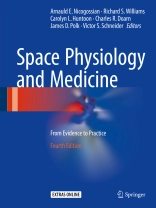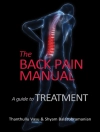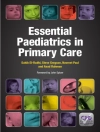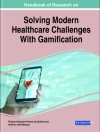As space medicine evolved from the late 1950s onward, the need arose for a ready reference for students and practitioners on the basic concepts of this new specialty. Through three editions edited by leaders in the development of space medicine, this classic text has met the need. This fourth edition of Space Physiology and Medicine provides succinct, evidence-based summaries of the current knowledge base in space medicine and serves as a source of information on the space environment, responses, and practices. Additionally, there is extensive online material available for each chapter, featuring overviews and self-study questions.
Cuprins
Dedication.- Foreword.- Preface.- Acknowledgments.- Contributors.- Introduction.- Section I: Introduction to Space Medicine.- Chapter 1:Evolution of Human Capabilities and Space Medicine.- Chapter 2: The Environment of Space Exploration.- Chapter 3:Living and Working in Space: An Overview of Physiological Adaptation, Performance, and Health Risks.- Section II: Space Craft Environments.- Chapter 4: Toxicology.- Chapter 5: Microbiology.- Chapter 6: Acoustics and Audition.- Chapter 7: Radiation Health and Protection.- Section III: Space Flight and Crew Health: Adaptation, Pathophysiology, Rehabilitation, and Countermeasures.- Chapter 8: Cardiopulmonary System: Aeromedical Considerations.- Chapter 9: Neurology.- Chapter 10: Regulatory Physiology.- Chapter 11:Metabolism and Nutrition.- Chapter 12: Clinical Pharmacology and Therapeutics.- Chapter 13:Musculoskeletal Adaptation to Space Flight.- Chapter 14: Behavioral Health and Performance.- Section IV: Occupational Health and Safety Issues in Space Flight.- Chapter 15:Principles of Crew Health Monitoring and Care.- Chapter 16: International Dimension of Space Medicine.- Section V: Ground-Based and Academic Training Programs.- Chapter 17: Simulations and Analogs (Test-Beds).- Chapter 18: Training in Space Medicine.- Section VI:Future Perspectives.- Chapter 19: Commercial Space Tourism and Space as a Biomedical Laboratory.- Acronyms.
Despre autor
Arnauld E. Nicogossian, MD, FACPM, FACP
Distinguished Research Professor
Schar School of Policy and Government,
George Mason University
Senior Editor, World Medical and Health Policy Journal, and
Former NASA Associate Administrator,
Office of Life and Microgravity Sciences and Applications
Arlington, VA, USA
Richard S. Williams, MD, FACS
Chief Health and Medical Officer
National Aeronautics and Space Administration
Washington, DC, USA
Carolyn L. Huntoon, Ph D
Former Director NASA Lyndon B. Johnson Space Center &
Assistant Secretary of Environmental Management, DOE
Barrington, Rhode Island, USA
Charles R. Doarn, MBA
Special Assistant to the Chief Health and Medical Officer
NASA Office of the Chief Health and Medical Officer
Washington, DC, USA
Research Professor
Department of Family and Community Medicine
School of Medicine
Unviersity of Cincinnati
Cincinnati, Ohio, USA
James D. Polk, DO, MS, MMM, CPE, FACOEP
Senior Medical Officer
National Aeronautics and Space Administration
Former Chief Flight Medicine
NASA Lyndon B. Johnson Space Center
Houston, Texas, USA
Victor S. Schneider, MD
Program Executive Human Exploration & Operations Mission Directorate
NASA HQ
Visiting Associate Professor
University of Texas Medical Branch, Galveston, Texas, USA












